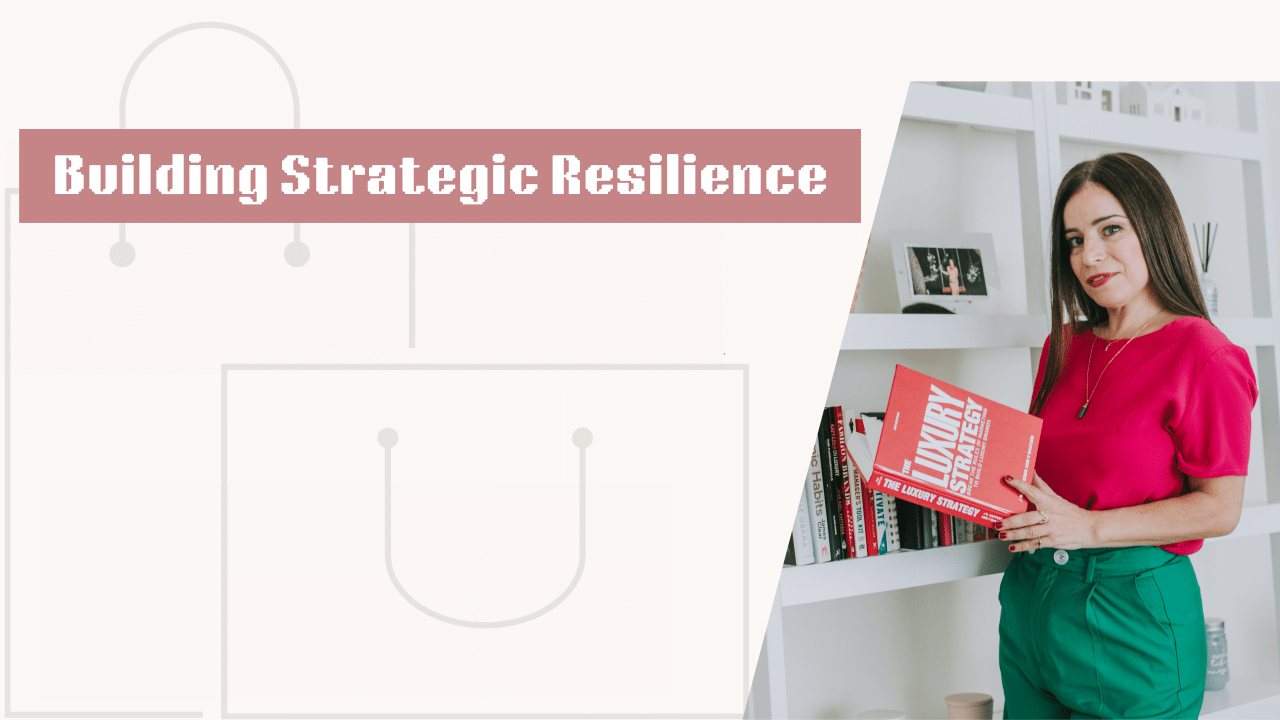In 2025, luxury brands are navigating a rapidly changing landscape defined by economic volatility, evolving consumer expectations, and advancements in technology. To thrive in this competitive environment, developing strategic resilience is essential. By fostering innovation, emphasizing sustainability, and embracing digital transformation, luxury brands can respond to shifting market dynamics while maintaining their unique allure. Key resilience strategies include diversifying supply chains, delivering personalized and elevated customer experiences, and exploring growth opportunities in emerging markets. Furthermore, aligning with global movements like ethical sourcing and environmental responsibility strengthens brand loyalty. This forward-thinking approach ensures luxury brands remain adaptive, relevant, and successful in the face of uncertainty.
Building Strategic Resilience
Strategic resilience involves the ability to adapt, innovate, and thrive in the face of challenges. For luxury brands, this means rethinking traditional strategies and embracing new approaches. Here’s how:
1. Embracing Innovation
Innovation lies at the heart of building resilience in the luxury sector. By adopting advanced technologies, luxury brands can elevate their products, services, and customer experiences to stay ahead of the curve.
Digital Transformation
Technology enables luxury brands to craft immersive and personalized experiences. Augmented reality (AR) and virtual reality (VR) offer customers the ability to virtually “try on” products or engage with exclusive brand stories. Virtual showrooms and interactive platforms replicate the sophistication of in-store visits, providing a seamless and engaging digital experience.
Blockchain for Authenticity
The prevalence of counterfeit goods poses a significant challenge for the luxury industry. Blockchain technology offers a solution by ensuring product authenticity through secure and transparent records of origin, craftsmanship, and ownership, fostering trust among discerning customers.
Artificial Intelligence (AI) for Personalization
AI enables brands to analyze customer data and deliver tailored recommendations and marketing campaigns. By understanding individual preferences, brands can create unique and highly personalized shopping experiences, strengthening customer loyalty.
2. Prioritizing Sustainability
Sustainability has become a cornerstone of the luxury industry, evolving from a trend to an essential practice. Integrating eco-conscious initiatives while preserving the heritage of quality and craftsmanship is imperative for long-term success.
Sustainable Materials
Luxury brands can embrace sustainable materials like lab-grown diamonds, recycled metals, and organic textiles. These alternatives reduce environmental impact while appealing to consumers who prioritize sustainability.
Circular Economy Models
Adopting circular economy principles allows brands to extend the lifecycle of their products. Repair services, resale platforms, and rental options enable consumers to reuse and recycle, aligning with modern sustainability expectations.
Transparent Supply Chains
Transparency in sourcing and manufacturing is increasingly important to consumers. By providing detailed insights into their supply chains, luxury brands can build trust and demonstrate their commitment to ethical and sustainable practices.
3. Enhancing Customer Experiences
The luxury customer experience remains a defining factor in brand differentiation. Creating unforgettable and personalized interactions is essential to fostering strong connections with clientele.
Omnichannel Strategies
Integrating online and offline channels seamlessly enhances the customer journey. For instance, customers can explore products online, schedule in-store visits, and receive tailored follow-ups through digital platforms, offering convenience and exclusivity.
Experiential Retail
Luxury stores should transcend traditional retail by becoming immersive brand destinations. Hosting exclusive events, workshops, and VIP experiences allows customers to connect deeply with the brand’s heritage and values, enhancing loyalty.
Emotional Engagement
Storytelling is a powerful tool for creating emotional bonds. By sharing their history, craftsmanship, and values, luxury brands can resonate with customers on a deeper level, turning them into passionate advocates.
4. Tapping into Emerging Markets
Emerging markets, particularly in Asia, the Middle East, and Africa, present significant growth opportunities for luxury brands. However, success in these regions requires a nuanced approach.
Cultural Relevance
Luxury brands must tailor their offerings to align with local tastes and cultural preferences. For instance, incorporating traditional motifs or collaborating with local artists can resonate with regional audiences.
Strategic Partnerships
Collaborations with local influencers, designers, and retailers can help luxury brands establish a foothold in new markets. These partnerships provide insights into local consumer behavior and enhance brand visibility.
Digital Presence
In many emerging markets, mobile-first consumers dominate. Luxury brands must invest in mobile-friendly websites, apps, and social media campaigns to reach these tech-savvy audiences.
5. Diversifying Revenue Streams
Luxury brands can build resilience by diversifying their revenue streams and exploring new business models.
Subscription Services
Offering subscription-based services, such as access to exclusive collections or personalized styling, can create a steady revenue stream and foster customer loyalty.
Experiential Offerings
Beyond products, luxury brands can offer experiences such as travel packages, wellness retreats, or culinary events that align with their brand identity.
Digital Collectibles and NFTs
The rise of digital art and non-fungible tokens (NFTs) presents an opportunity for luxury brands to explore virtual assets. For example, brands can create limited-edition digital collectibles that appeal to tech-savvy consumers.
6. Strengthening Supply Chain Resilience
A resilient supply chain is critical for luxury brands to ensure consistent quality and timely delivery.
Localized Production
Relying on local artisans and suppliers can reduce dependency on global supply chains and minimize disruptions caused by geopolitical tensions or natural disasters.
Technology Integration
Smart supply chain technologies, such as IoT sensors and predictive analytics, can improve efficiency and provide real-time insights into inventory and production.
Ethical Sourcing
Luxury brands must ensure that their supply chains align with ethical standards. This includes fair labor practices, environmentally friendly sourcing, and support for local communities.
7. Leveraging Data and Analytics
Data-driven decision-making can help luxury brands anticipate trends, understand consumer behavior, and optimize operations.
Predictive Analytics
By analyzing historical data, luxury brands can forecast demand, identify emerging trends, and plan inventory accordingly.
Customer Insights
Data collected from online and offline interactions can provide valuable insights into customer preferences, enabling brands to tailor their offerings and marketing strategies.
Performance Metrics
Tracking key performance indicators (KPIs) such as customer retention, sales growth, and social media engagement can help brands measure the success of their strategies and make informed adjustments.


